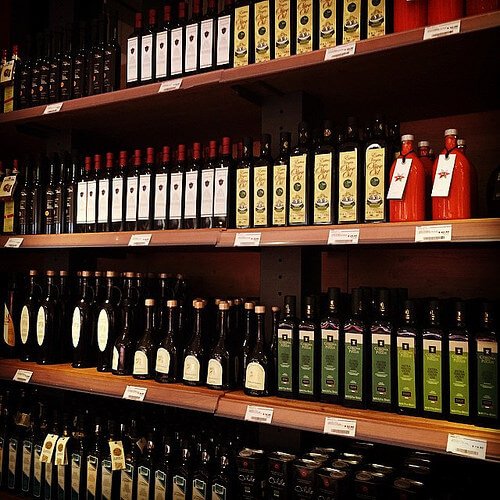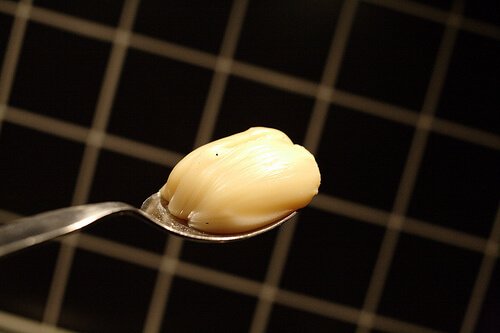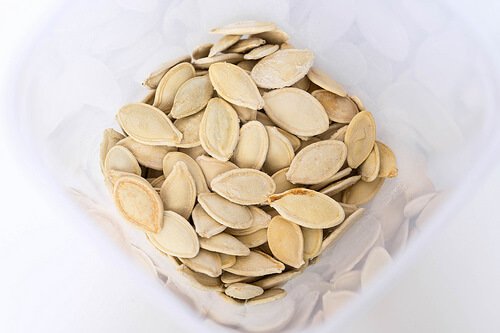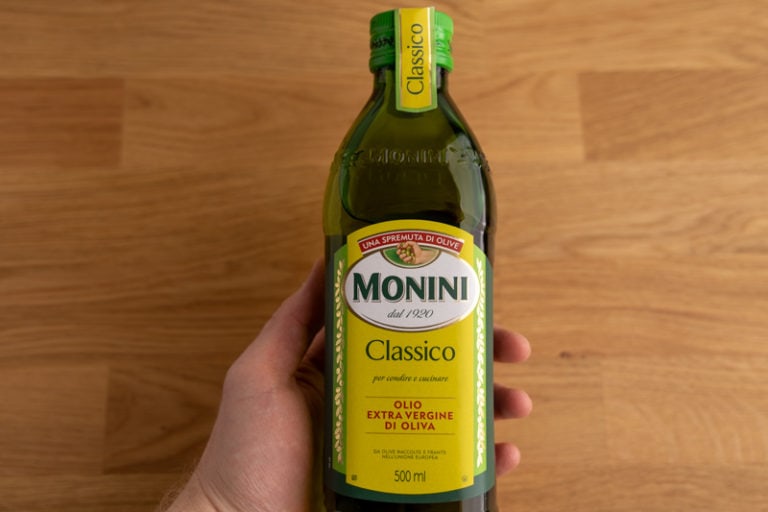Does Grapeseed Oil Go Bad?
There’s this half-open bottle of grapeseed oil in your pantry. And it sits there for who knows how long. You switched to a different cooking oil some time ago and forgot about this one. Now you want to finish the bottle, but you notice that it’s past the date on the label. Does grapeseed oil go bad?
Well, the answer to this question is a bit more complicated than a simple yes or no. To answer it for your specific situation, you need to learn a bit about storage, shelf life, and going bad of grape seed oil. In this article, we go through all of those topics.
If you prefer to avoid waste, but at the same time you don’t want to make anyone sick from eating spoiled oil, read on.

How To Store Grape Seed Oil
Storing grapeseed (or grape seed) oil is no different from storing other oils, like peanut oil. That means you should keep it in a cold and dark place, away from sources of light and heat. The ideal storage temperature is between 68 to 77 Fahrenheit (or 20 to 25 Celcius). That means you can store the oil in either the pantry or the kitchen. Just make sure it’s away from the oven, as frequent temperature fluctuations may cause its quality to degrade faster.
Once you open the bottle, remember to keep it sealed tightly when not in use. The rest of the guidelines don’t change.
You can also refrigerate this oil to extend its shelf life slightly. However, refrigeration is totally optional.
These guidelines work for almost all other oils. That means you also know how to store sesame oil, avocado oil, and so on.
Unlike other oils, grapeseed oil doesn’t get cloudy when refrigerated. That makes it a perfect oil for many dressings, homemade mayo, and other foods that require refrigeration.
How Long Does Grapeseed Oil Last
The shelf life of grapeseed oil is not that different from other cooking oils. As usual, the bottle comes with a best-by date on the label. That date is more about freshness than food safety. If you adhere to the storage guidelines I outlined earlier, you can expect the oil to last in excellent quality at least a few months past that date.
Once you open the bottle, the oil gets access to “fresh” oxygen, and the process of oxidation speeds up. Oxidation results in the oil going rancid. However, that’s a slow process, especially if you open the bottle rarely and close it tightly as soon as you’re done.
Nevertheless, expect the oil to retain freshness for about half a year in the pantry and a year if refrigerated. Please note that those are rough estimates and your specific situation might be different.
| Pantry | Fridge | |
|---|---|---|
| Grapeseed oil (unopened) | Best by + 3 – 6 months | Best by + 6 – 12 months |
| Grapeseed oil (opened) | 6 months | 1 year |
Please note that the periods above are for best quality only.
How To Tell If Grapeseed Oil Is Bad
While oils usually do not mold or rot in the traditional sense, please keep an eye out for any signs of mold, discolorations, off smell, or change in taste. If any of these occur, discard the oil.
What’s much more likely to happen is that the oil goes rancid. Rancidity occurs when the oil is oxidized, which happens due to exposure to light, heat, or oxygen for extended periods. While rancid oils aren’t necessarily unsafe to eat (in small amounts), their nutritional value is diminished. And they sure as hell don’t taste good.
If the grapeseed oil develops an unpleasant odor (e.g. it smells like old paint, as I described in my article on the shelf life of canola oil) or taste, it most likely is rancid. Be sure to give the oil a good sniff before using it to check for rancidity.
If everything with the oil seems to be okay, and you don’t store it for much longer than recommended, feel free to use it.
Rotten Records: Share Your Snap!
Caught some food past its prime? Upload your photo to “Rotten Records” and help others spot the signs of spoilage. Every image makes our food community safer and more informed!




![Does Coconut Oil Go Bad? [Shelf Life and Expiration]](https://www.doesitgobad.com/wp-content/uploads/Coconut-oil-jar-in-hand-768x512.jpg)
![Does Sesame Oil Go Bad? [Shelf Life and Spoilage]](https://www.doesitgobad.com/wp-content/uploads/Sesame-oil-and-other-condiments.jpg)